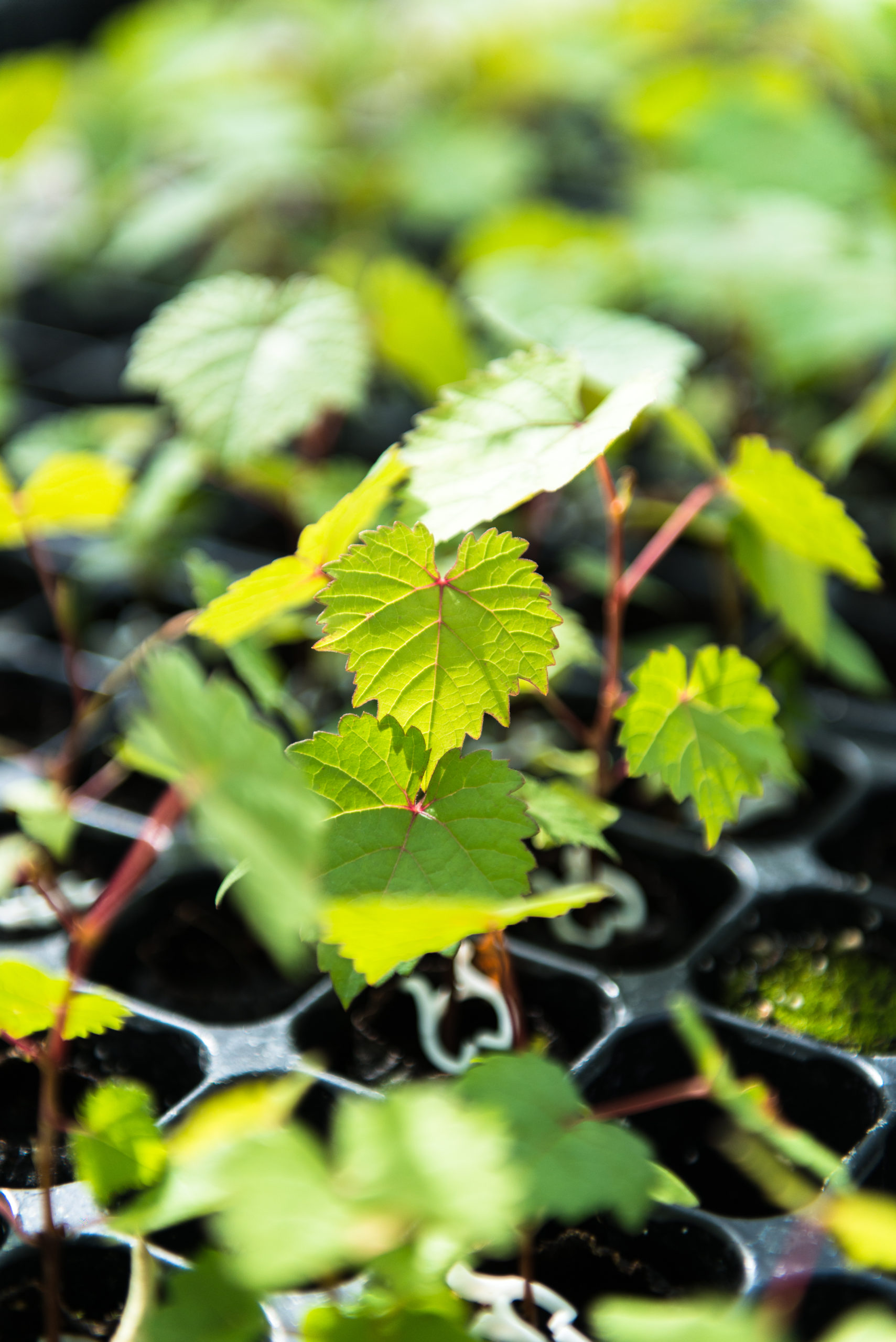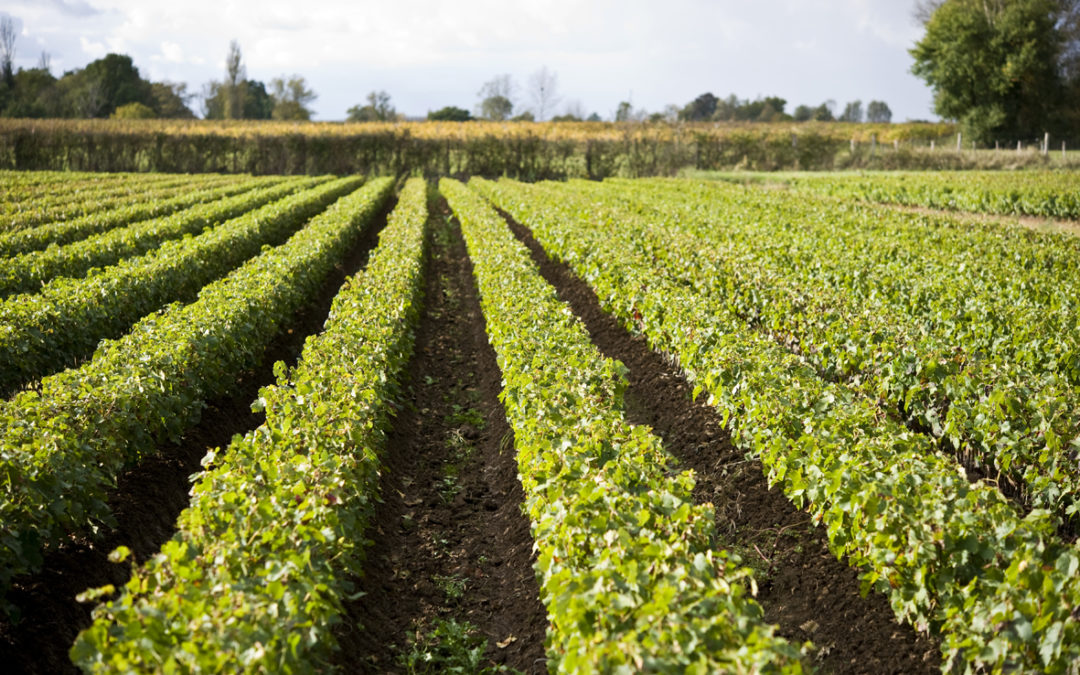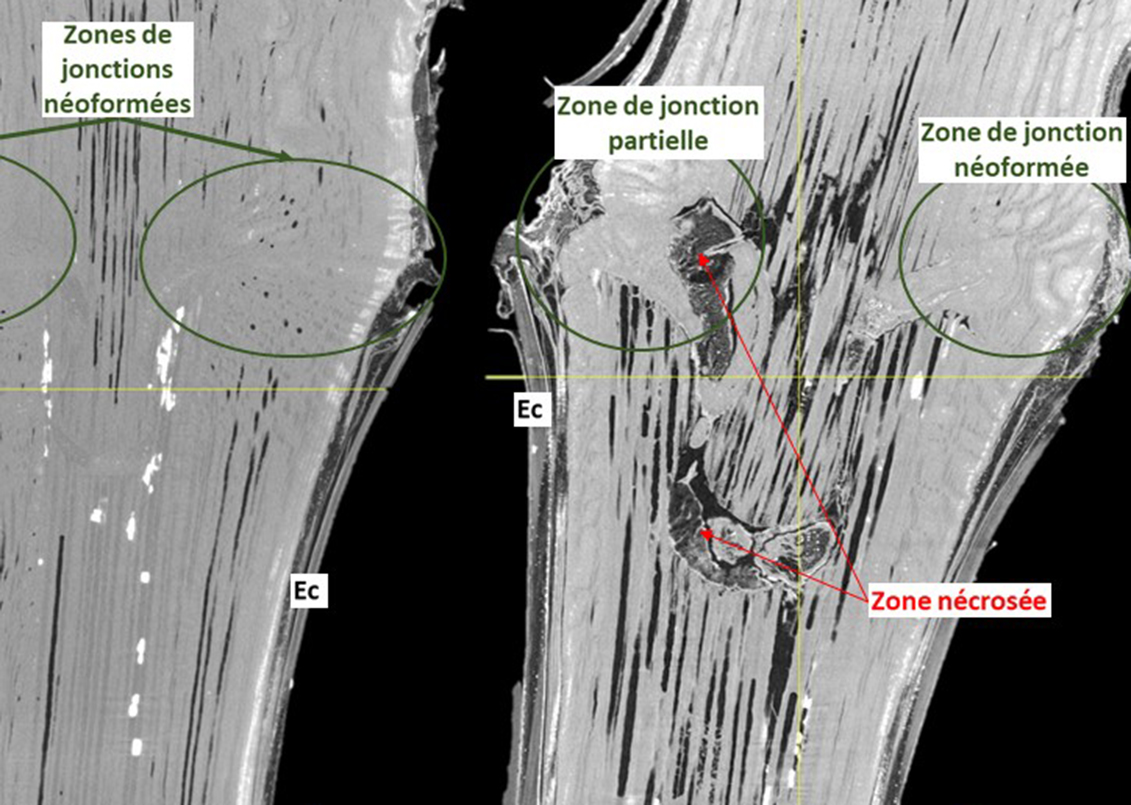Modern genotyping and DNA analysis techniques have revolutionized ampelography. They make it possible to differentiate the large groups within the Vitis vinifera species and to distinguish between varieties without waiting for the development of the plants.
The term ampelography comes from the Greek “ampelos” meaning vine and “graphy” referring to the description. First proposed in 1661 by Dr. Sachs in the book Ampelographia, this term today covers the description and identification of grape varieties, the study of their evolution and the relationships between them, and knowledge of their behaviour in relation to the environment (cultivation and oenological suitability). For a long time, ampelography was based only on visual observation of the vine, in particular on the morphology of the leaves, shoots and bunches. Of the hundred or so descriptors codified to describe the various organs of the vine, 14 priority primary descriptors were selected by the OIV for their excellent ability to discriminate between varieties. More recently, ampelography has acquired new tools such as chemotaxonomy (studies of secondary metabolism compounds) or biochemical markers (isozymes). The real revolution came with the incorporation of genetic techniques into ampelography in the 1990s. Molecular marking and DNA sequencing allowed access not only to the phenotype but also directly to the genotype at an early stage without the need to wait for full plant development. The DNA required for this type of analysis can be extracted from a few tens of milligrams of plant material and from any organ or part of the plant (leaves, berries, shoots, roots, etc.).
What is DNA and how is it structured?
Deoxyribonucleic acid, or DNA, is a molecule present in all living cells which contains all the information necessary for the development and functioning of an organism. It is also the basis for heredity because it is transmitted during sexual reproduction, either wholly or in part. It is the carrier of genetic information and constitutes the genome of living beings. DNA determines the synthesis of proteins, via RNA. This double helix is composed of nucleotide sequences consisting of a phosphate group linked to a sugar, deoxyribose, itself linked to a nitrogenous base. There are four different nitrogenous bases including cytosine (C) and thymine (T) of the pyrimidine family and adenine (A) and guanine (G) of the purine family. In plant cells, DNA is located in the nucleus, chloroplasts and mitochondria. Chloroplasts are essential organelles that capture the light responsible for photosynthesis. Mitochondria provide energy to the cells.
What techniques does molecular ampelography use?
Molecular ampelography involves the analysis of several types of markers on the DNA, which allow individuals to be differentiated with certainty:
- microsatellites (nuclear and chloroplastic) or SSR (Simple Sequence Repeats): these are short DNA sequences formed from the repetition (up to 20-30 times) of 2, 3 or 4 base units (e.g. C-A or G-A-T).
- indels that are insertion or deletion mutations of short DNA sequences
- transposable or mobile elements sometimes also called “jumping genes”. Their movements can be activated by stress and certain environmental factors. The mobility of these elements is a source of mutations, therefore of genetic variability and evolution. We can distinguish between retro-transposons that spread in a “copy and paste” mode and transposons that move by “cut and paste”
- Single Nucleotide Polymorphisms (SNPs) that involve only a single nucleotide. This is a change from one base to another. A distinction is made between transitions which are substitutions of nucleotides within the same family (purine or pyrimidine) and transversions, changes from a purine to a pyrimidine or vice versa.
What has molecular ampelography taught us about the origin of the vine?
The work carried out by Jean-Pierre Péros’ team at INRAE in Montpellier has highlighted the ancestral character of Asian vine species, which are believed to be at the origin of both the European species Vitis vinifera and the American species. With regard to the latter, two distinct events of dispersal from Eurasia to America would have occurred: one event at the origin of the central and eastern species (Vitis labrusca, Vitis riparia , Vitis rupestris and Vitis berlandieri), the other at the origin of the Californian species (Vitis californica). The analysis of the micro-satellites also made it possible to differentiate the true European wild vines (Vitis vinifera subsp. sylvestris) from the cultivated varieties. Within this cultivated compartment, these analyses enabled the varieties to be divided objectively into five major geographical groups according to their aptitudes.
What has molecular ampelography taught us about the relationship between grape varieties?
Micro-satellite analysis of the 2,300 traditional grape varieties conserved at Domaine de Vassal (INRAE, in Marseillan) has made it possible to build up a complete and unique database. When, out of all the markers of a variety studied, two other grape varieties can be found with half of the determined values, there is a high probability that these two grape varieties have been crossed, giving rise to the third one. It is sometimes even possible, for a given cross, to determine the father – the source of the pollen – and the mother that bore the fruit. This is because it is the mother who provides the future descendant with all of its “metabolic machinery”, in particular its chloroplasts. These also contain DNA on which certain genetic markers have been identified.
It has thus been shown that Gouais B, a white variety of little oenological interest, was an important progenitor of our grape varieties. For example, by crossbreeding with a Pinot, it gave rise to Chardonnay B, Aligoté B, Auxerrois B, Melon B and Gamay N. With other often unknown parents, it also gave rise to Jacquère B, Grolleau N, Colombard B, Riesling B and even Saint-Côme B aveyronnais. More recently, a study conducted by Jean-Michel Boursiquot, Montpellier SupAgro and other collaborators, published in late 2008 in an Australian scientific journal, identified the kinship (parentage?) of Merlot N. During surveys carried out in old vineyard plots in Brittany and the Charentes, an original grape variety unknown in the collections was identified: Magdeleine noire des Charentes. Analyses confirmed that this very old grape variety was the mother of Merlot N and Cot N (Malbec). It was also known that Prunelard N and Malbec were related without knowing how. We now know that Prunelard N is the father of Malbec. The diagram below (Figure 1) from the publication illustrates some of the relationships between the grape varieties.
What are the most outstanding examples of successful variety identification using molecular ampelography?
In 2008, Jean-Michel Boursiquot with Laurent Audeguin of the IFV Plant Material Division, succeeded in identifying a fake Albarinho B during a mission in Australia. For many years, local winegrowers had believed they were growing this variety, which originated on the western side of the Iberian Peninsula, but our colleagues determined that it was in fact Savagnin B. This result was confirmed shortly after their return to France thanks to the genetic analysis of DNA taken on site and after comparison with existing databases (IFV, INRA). For the record, the same story had already occurred in Chile almost twenty years before, long before the use of genetic markers. Carmenère N had long been confused by winegrowers with Merlot N. Jean-Michel Boursiquot made this discovery in 1994. In the region, these techniques have enabled IFV Sud-Ouest to identify all the old varieties maintained in the regional conservatories and to introduce into the collections original varieties that were not included, such as Moural N from the Aveyron, Bouysselet B from Fronton and other, as yet unnamed varieties.
Can molecular ampelography distinguish between clones?
For the moment, molecular ampelography does not allow us to distinguish between clones of the same grape variety, as there is very little intra-varietal difference at the micro-satellite level. However, new methods for very high throughput DNA sequencing now make it possible to consider re-sequencing the genome of different individuals. This approach was chosen to try to detect genetic differences that may exist between clones. During a thesis conducted by Grégory Carrier under the aegis of UMT Géno-Vigne® (UMT standing for “joint technology unit”) and supervised by IFV, Montpellier SupAgro and INRAE, three Pinot noir clones were analyzed. The results highlighted the predominant role of mobile elements (retro-transposons) in the genetic polymorphism detected between these clones. On this basis, a preliminary diversity analysis using SSAP markers resulted in unique profiles for all the Pinot Noir clones in the collection. However, selection of these markers and validation of their stability and repeatability still need to be carried out before a reliable identification of the different clones can be envisaged.
- [Webinar] Solutions for alternative weed control #1 Electric weeding – Case studies in vineyard, grassland - 27 April 2023
- Mechanical weeding and required technical skills - 26 March 2023
- 10 questions and answers about plant cover in the vineyard - 25 March 2023
- What are the new avenues of research in system experimentation? - 23 March 2023
- What is clonal selection? - 23 March 2023
- Phthalates : Potential sources and control measures - 23 March 2023
- Rosé wines: impact of storage conditions in tank on the polyphenol composition and color - 29 March 2021
- Reducing alcohol content in wines by combining canopy management practices and biological techniques - 29 March 2021
- Enzymes in oenology : production, regulation, applications - 29 March 2021
- Herbicide-free strategies - 26 March 2021





Réagir à l'article
Pour pouvoir laisser un commentaire, vous devez être inscrit sur notre site.
M'inscrireL'inscription est gratuite.
Déjà inscrit
Lost your password?